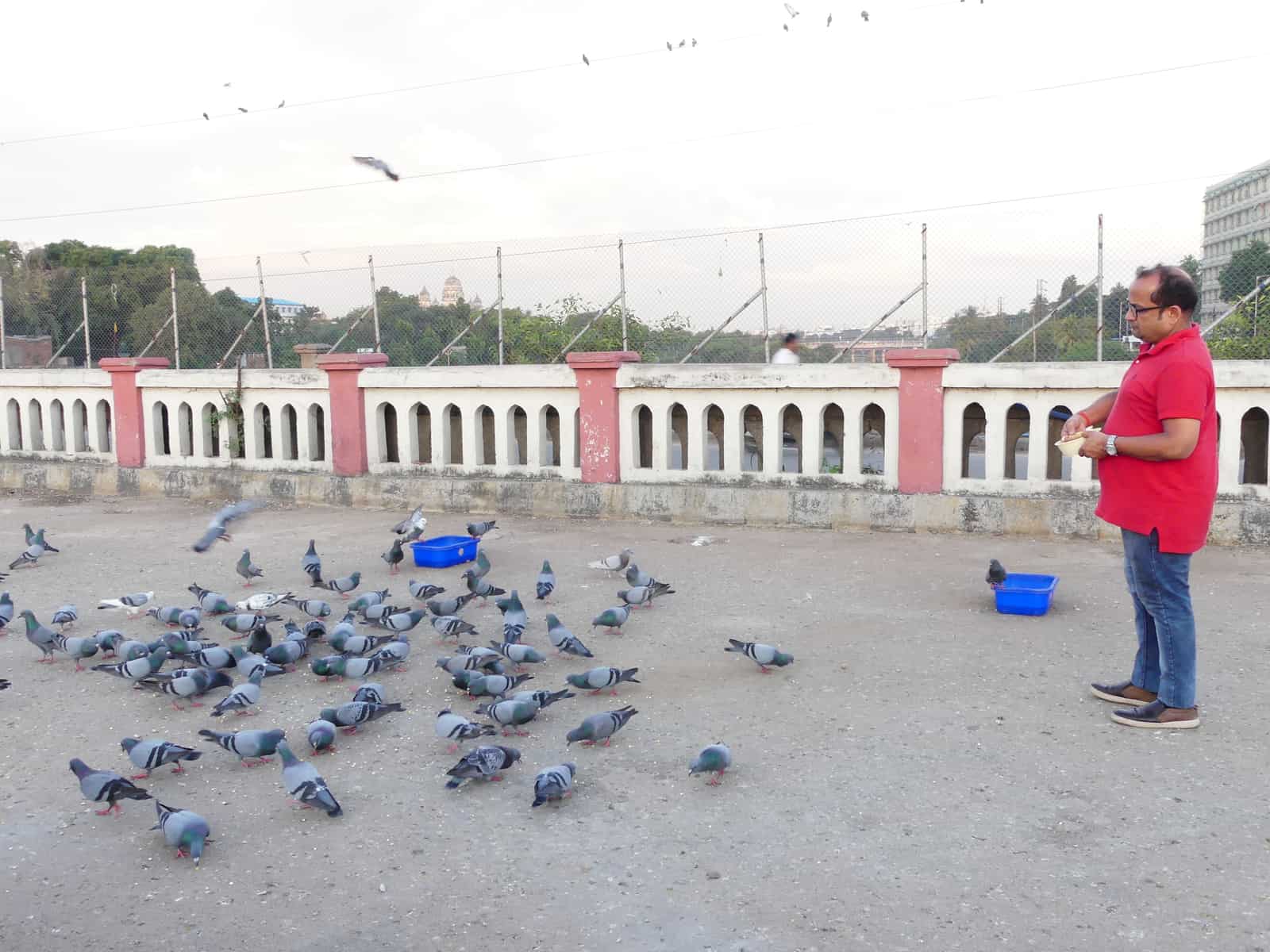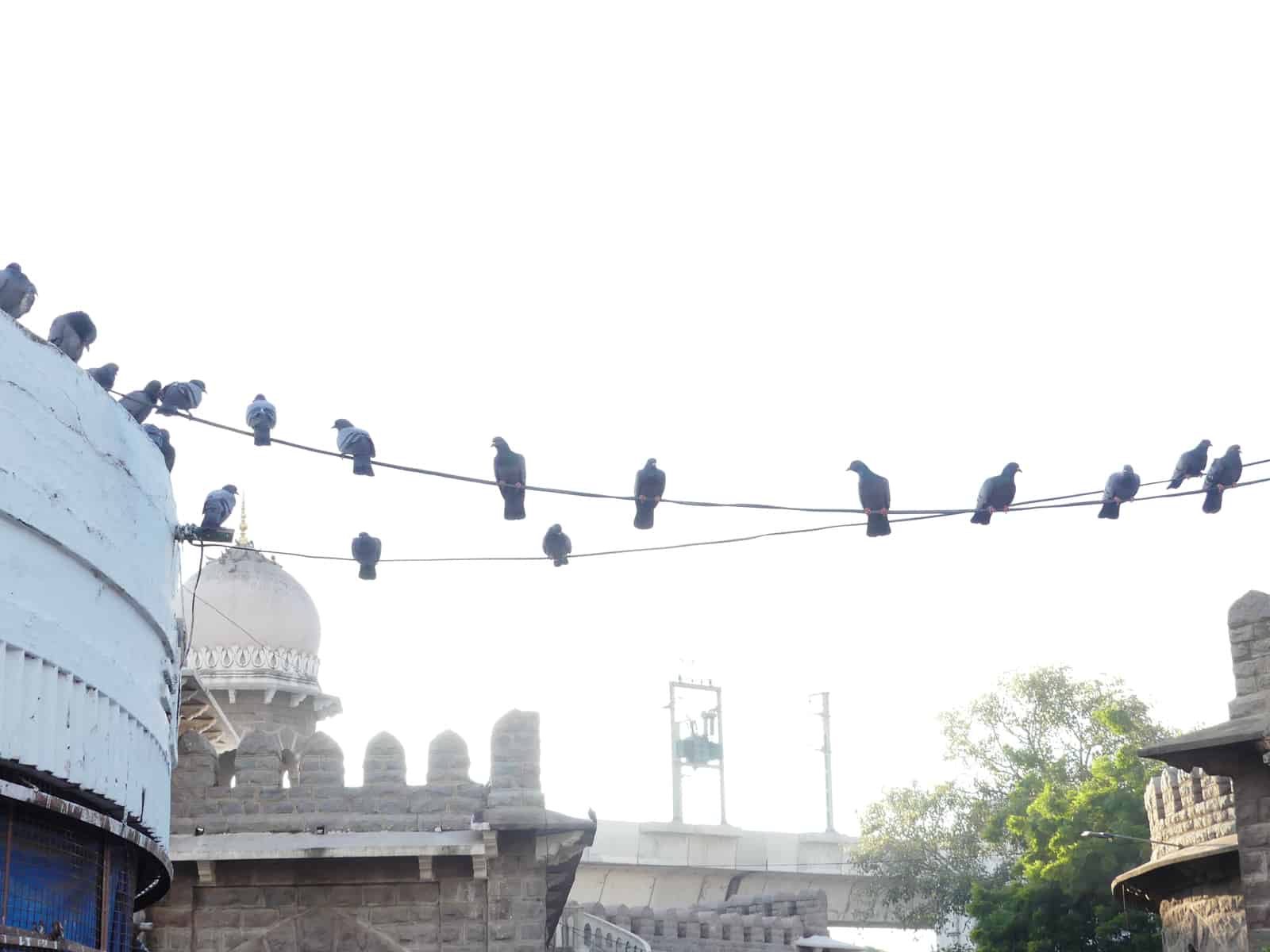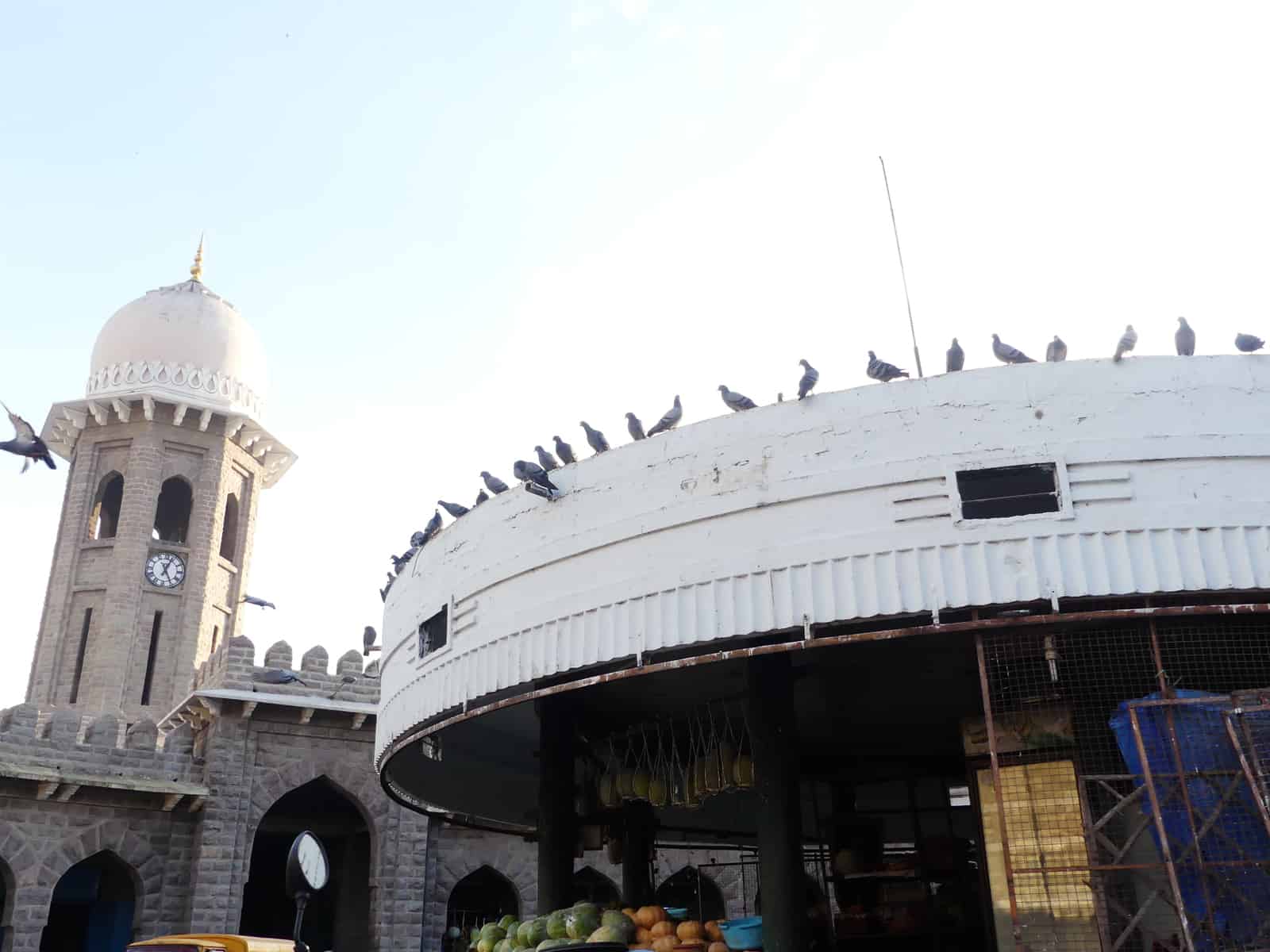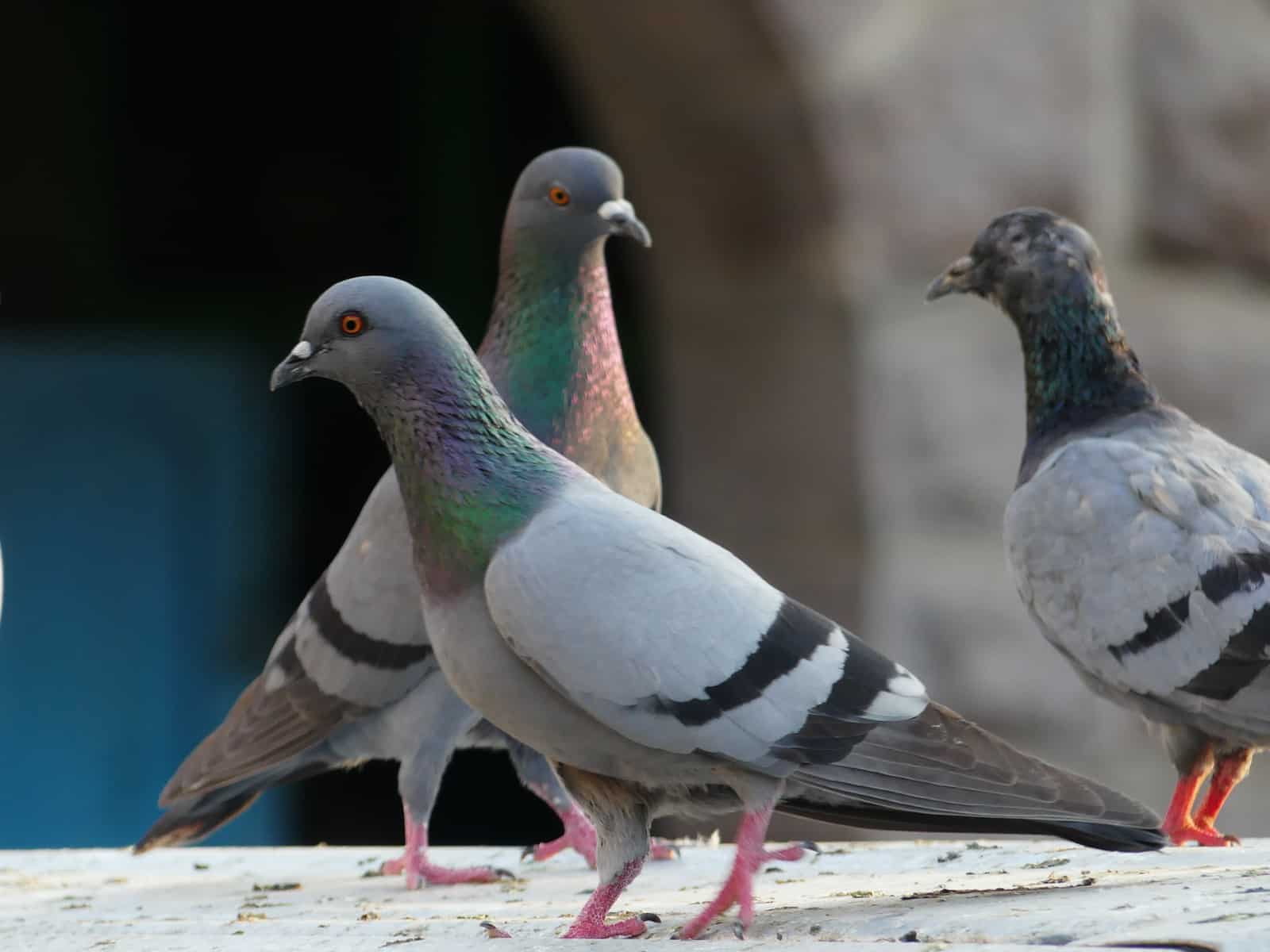Mohammed Hussain
siasat.com
Hyderabad: Although tens of thousands of pigeons are invading Hyderabad’s historical landmarks like Moazzam Jahi Market, Nayapul, Makkah Masjid, old temples and other areas there appears no effort on the part of government or the GHMC to control their population or spread to newer areas.
Recently, the GHMC captured around 500 pigeons from the MJ Market and relocated them to forests near Srisailam as they were hampering the beautification works at the heritage site.

Surekha Aitabathula, the Secretary of Deccan Birders (formerly known as Birdwatchers Society of AP) said, “Pigeons are not meant for the forests as they won’t survive there. Releasing them into the forest wasn’t exactly the right measure.”
Many cities around the world have prohibited and even penalised such feeding of a feral bird population. To prohibit the public from doing so, even the GHMC was forced to erect a banner at the Moazzam Jahi market. The overpopulation of pigeons in Hyderabad is cause for concern due to health, biodiversity and even aesthetic reasons. Hence, the need for well-planned and effective measures.
Reasons behind the rising population
The availability of excess food is a major reason for their burgeoning population. Over the years, the population of prey birds like pariah kite or shikra has dwindled in the city due to anthropogenic reasons. As a result, the pigeon population has been indirectly thriving in the city.
The birds have to find food every day to survive
“Pigeons are granivorous birds, and here in the city, they largely rely on the public for their food. They will feel safe among humans who feed them,” specifies Aitabathula.

With numerous shelters they find in the households of human beings, it is no wonder as to why the pigeon population is soaring.
She reveals, “There is this sentiment among people that feeding pigeons results in a better planetary configuration.”

A major reason behind the city’s bulging pigeon population is the abundance of feed provided by well-meaning individuals oblivious to the effects of such generosity.
This should not come as a surprise considering various parts of the city. The streets of Charminars, Begum Bazaar, Hashmat Gunj, Indira Park, Tank Bund, KBR Park, and Ameerpet are festooned with grains that were fed to pigeons.
Of course, these birds are not any less street-smart than the streetwise Hyderabadi him/herself. These flocks will shrewdly sniff out feeding spots or places of worship.
Which hungry bird in his/her right mind refuse a free meal consisting of grains and water left on a platter for them?
Hence, Aitabathula advices, “Feeding these pigeons will only increase their numbers. So it is best that people let them find their own food for sake of population balance.”
Health concerns and natural habitats
Although noble, the act of feeding these pigeons has far-reaching effects as well. The harmful fungus found in the bird droppings spreads through the dust and the flapping of wings. “Beware of feathers and droppings because this pertains to public health,” warns Dr. Mahboob Khan, Superintendent of Government Chest Hospital.
He explains, “Pigeon excreta affects people who inhale the dried pigeon excreta in the form of dust. When inhaled, the particles of the excreta, can cause severe infections such as hypersensitive pneumonitis and fungal infections including histoplasmosis, Cryptococcus, and candidiasis.”
These effects extend beyond the city and into the forest landscape. Dr. B V Subba Rao, a city-based environmentalist, expressed concern at the lack of actionable policy solutions of the GHMC or the Hyderabad Metropolitan Development Authority. He mentions, “The forests where the birds are released aren’t immune to the presence of these pigeons.”
While Subba Rao feels that these pigeons are detrimental to urban and rural settings, erstwhile BSAP Secretary, Mohammed Shafaat Ullah, feels that the latter setting is conducive pigeons. According to him, relocating the pigeons to the forest wasn’t exactly the most suitable decision.
“The jungle is not their natural habitat,” said M Shafaat Ullah, past Secretary of BSAP. He adds, “Most of the pigeons are home dwellers and have exceptional navigational abilities. Pigeons can fly back their way home no matter where you leave them.”
For the foreseeable future, Hyderabad will continue to be home to these delightful, yet detrimental creatures. After all, civic bodies will not be jogged out of their policy paralysis soon.
And Hyderabadis just seem to melt at the sight of a hungry, tweeting bird at their balcony.
mohammedhussain.reporter@gmail.com

